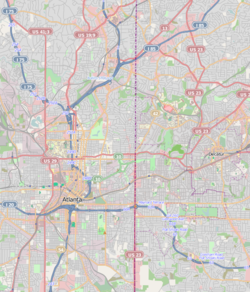Ansley Park Historic District | |
 | |
| Location | Atlanta, Georgia |
|---|---|
| Coordinates | 33°47′44″N84°22′45″W / 33.79556°N 84.37917°W |
| Built | 1904 |
| Architect | Ruff, S.Z.; Reid, Neel |
| Architectural style | Late 19th And Early 20th Century American Movements, Late 19th And 20th Century Revivals, Queen Anne |
| NRHP reference No. | 79000717 (original) 15000466 (increase) |
| Significant dates | |
| Added to NRHP | April 20, 1979 [1] |
| Boundary increase | July 27, 2015 |

Ansley Park is an intown residential district in Atlanta, Georgia, located just east of Midtown and west of Piedmont Park. When developed in 1905-1908, it was the first Atlanta suburban neighborhood designed for automobiles, [2] featuring wide, winding roads rather than the grid pattern typical of older streetcar suburbs. Streets were planned like parkways with extensive landscaping, while Winn Park and McClatchey Park are themselves long and narrow, extending deep into the neighborhood.
Contents
Ansley Golf Club borders the district. The neighborhood was largely completed by 1930 and covers 275 acres (1.11 km2). It has been designated a Historic District on the National Register of Historic Places. [3] In 2008, the median household income for the neighborhood was $226,335. [4] To the immediate east of the golf course is the Eastside Trail interim hiking trail, part of the BeltLine ring of parks and trails around the central city.

